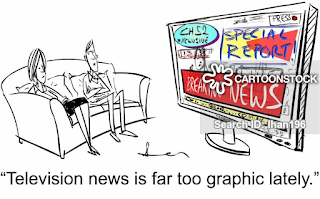as600718@ohio.edu
May 31, 2019
It used to be that if someone accused you of lying about something you allegedly said or did, you would be able to prove your innocence without a shadow of a doubt by whipping out a document or maybe even a video clip.
Now, it's not that simple.
In today's climate of "fake news" and "deep fakes," it's is nearly impossible to prove that something did or did not happen without a shadow of a doubt. The same technology that once helped us prove the facts, has started to become a tool used to create new truths -- and it's terrifying.
Image retrieved from http://suindependent.com/gwen-ifill-bullshit-news-political-cartoon/
It is so sad to see people who were once friends cut each other out of each other's lives over what they share on Facebook about the president or their political party when what they're sharing isn't actually real most of the time. It doesn't even have to be a true deep fake, where a brand new video is created using software that splices previous facial expressions and words together to create a new message, there are plenty of videos and photos floating around that are so extremely edited that the original message gets changed entirely. There are also writers that purposely make their websites look nearly identical to that of legitimate news sources and write articles full of made up facts and quotes that push their own agenda.
It's this extreme editing and sharing of these types of articles, videos and photos that are causing so many people to wonder what we will do in the not-so-distant future when technology advances even more and we won't be able to tell whether or not an article is real.
What will the future hold for news in our world?
Legitimate news sources have to find a way to show that their journalists are doing their research and providing all of the facts. Maybe it will require more live video streaming where it shows the reporters conducting their interviews in real time. Maybe it will take mainstream media taking the time to report on both sides of an issue instead of just one, so as to show that they are not pushing a political agenda like the fake news sites seem to be.
The bottom line is that someone is going to have to figure something out to get the public to be able to differentiate between real and fake news -- and soon -- before we all end up friendless and despising the world we live in.















